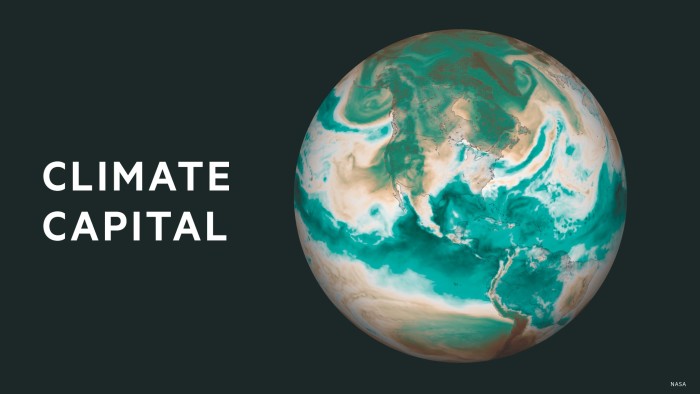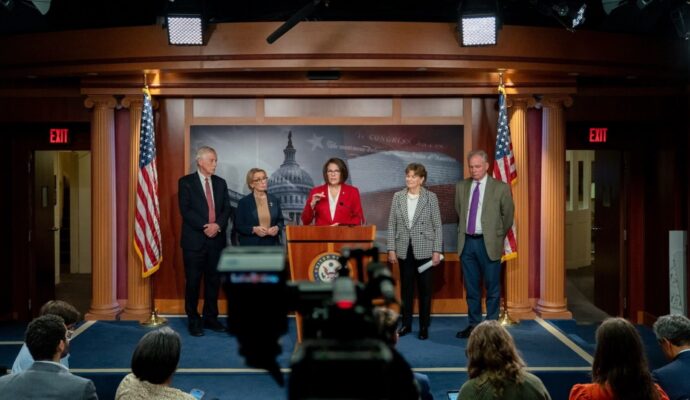Unlock the Editor’s Digest for free
Roula Khalaf, Editor of the FT, selects her favourite stories in this weekly newsletter.
China’s greenhouse gas emissions have remained largely flat over the past 18 months, according to the latest data from a climate research group, as the UN COP30 climate summit looks to Beijing to take a lead.
New analysis published on Tuesday for Carbon Brief found that China’s carbon dioxide emissions were unchanged in the third quarter of 2025 compared with the same period last year.
The emissions trend is partly a result of the slower pace of growth in construction and manufacturing combined with a surge in renewable energy and electric vehicles to absorb additional electricity demand.
The country completed 240 gigawatts of solar and 61GW of wind capacity in the first nine months of 2025, the analysis showed, putting it on track for a new renewable energy record in 2025. Electricity generation from solar grew by 46 per cent and wind by 11 per cent year on year in the third quarter of 2025.
The research concluded that China’s CO₂ emissions in 2025 were “now finely balanced between a small fall or rise, depending on what happens in the last quarter”.
However, the final quarter of last year brought a rise in emissions, in particular from the chemicals sector, an area where emissions continue to increase. Petrochemical and plastics production emissions rose 10 per cent in the September quarter.
The absence of the US administration at the two-week-long COP30 summit at the Amazonian port city of Belém in Brazil, which kicked off on Monday, has put the spotlight on China as well as the world’s other big emitters, such as India, which has not yet submitted its updated climate plan.
Almost 50,000 people had registered to attend the conference, according to the UN.
China, alongside the UK and Brazil, hosted talks on tackling methane and other non-CO₂ gases on the weekend. It was attended by Huang Runqiu, China’s minister of ecology and environment, who said that addressing climate change “requires concerted efforts from the entire world.”
On the opening day of the summit, COP30 president André Corrêa do Lago noted that China was playing a “very significant” role, highlighting how its green technology, from solar to batteries, had driven down costs and transformed the global energy system.
“By lowering the price of all these essential elements in the transition, they are doing an amazing job of international co-operation,” he said.
A separate report from a UN-supported initiative known as the Taskforce on Net Zero Policy said that, despite fears of a global climate policy rollback since the retreat, progress had continued. But the “centre of gravity” had shifted towards Asia Pacific and away from the US and EU.
The head of the UN climate change arm, Simon Stiell, said new national action plans that had been submitted so far would cut greenhouse gas emissions by 12 per cent by 2035 from 2019 levels.
The world must cut greenhouse gas emissions by almost half by 2030, compared with 2019 levels, to limit global warming to 1.5C since pre-industrial times.
“We have some tough opponents, no doubt, but we also have some heavyweights on our side,” said Stiell.
China has in recent days joined a coalition that aims to unify global carbon markets, led by host country Brazil and endorsed by the EU and countries including the UK and Canada. There are 37 carbon emission trading systems and 43 carbon taxes around the world, according to the World Bank.
But, in a sign of the difficulties of agreeing on how to price carbon globally, another coalition which includes China as a founding member criticised the EU introduction of its world-first carbon border tax, saying it would “undermine the basis of multilateral co-operation”.
China has also not yet agreed to pay a specific sum into Brazil’s flagship forest fund, though it is engaged in discussions, according to people close to the COP presidency.
“I don’t think they want to lead from the front,” one climate envoy in Belém said. “But they will defend the multilateral process and attacks on their performance.”
Climate Capital

Where climate change meets business, markets and politics. Explore the FT’s coverage here.
Are you curious about the FT’s environmental sustainability commitments? Find out more about our science-based targets here




